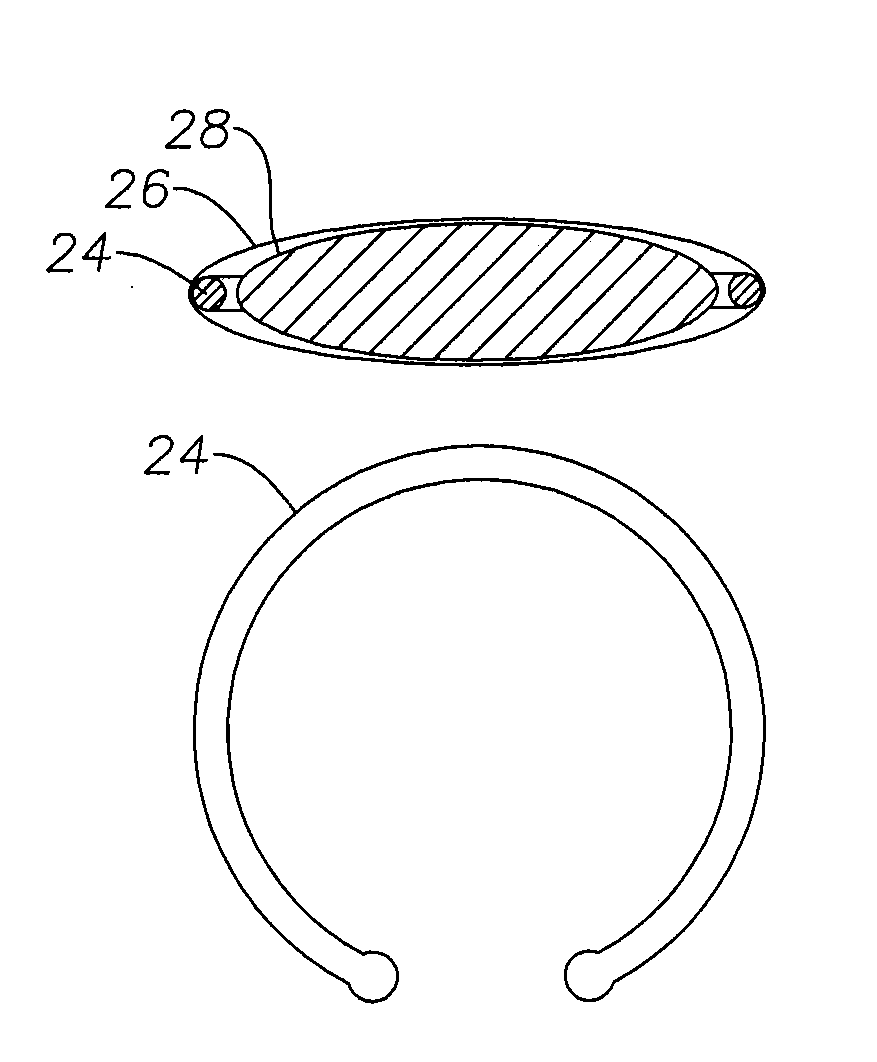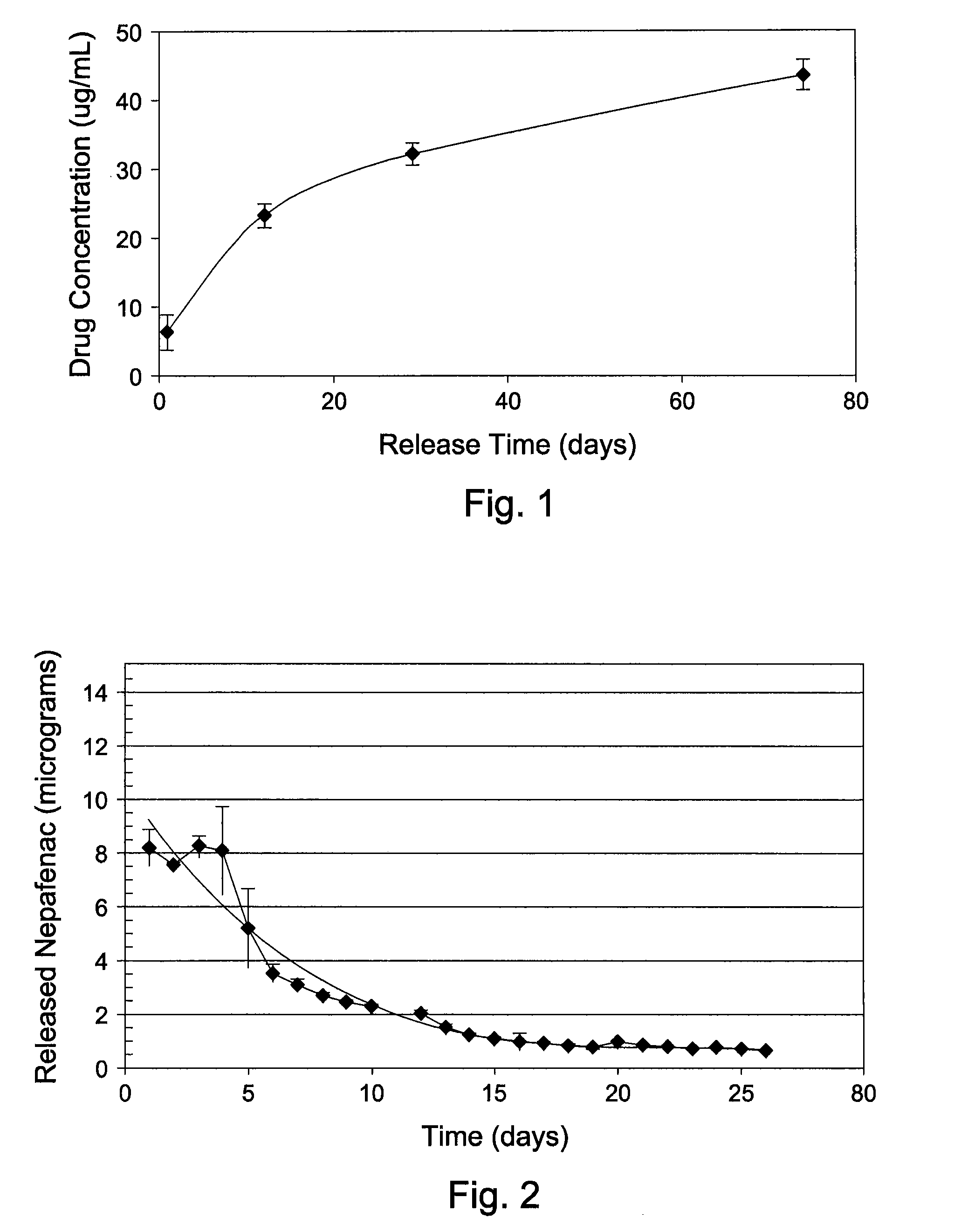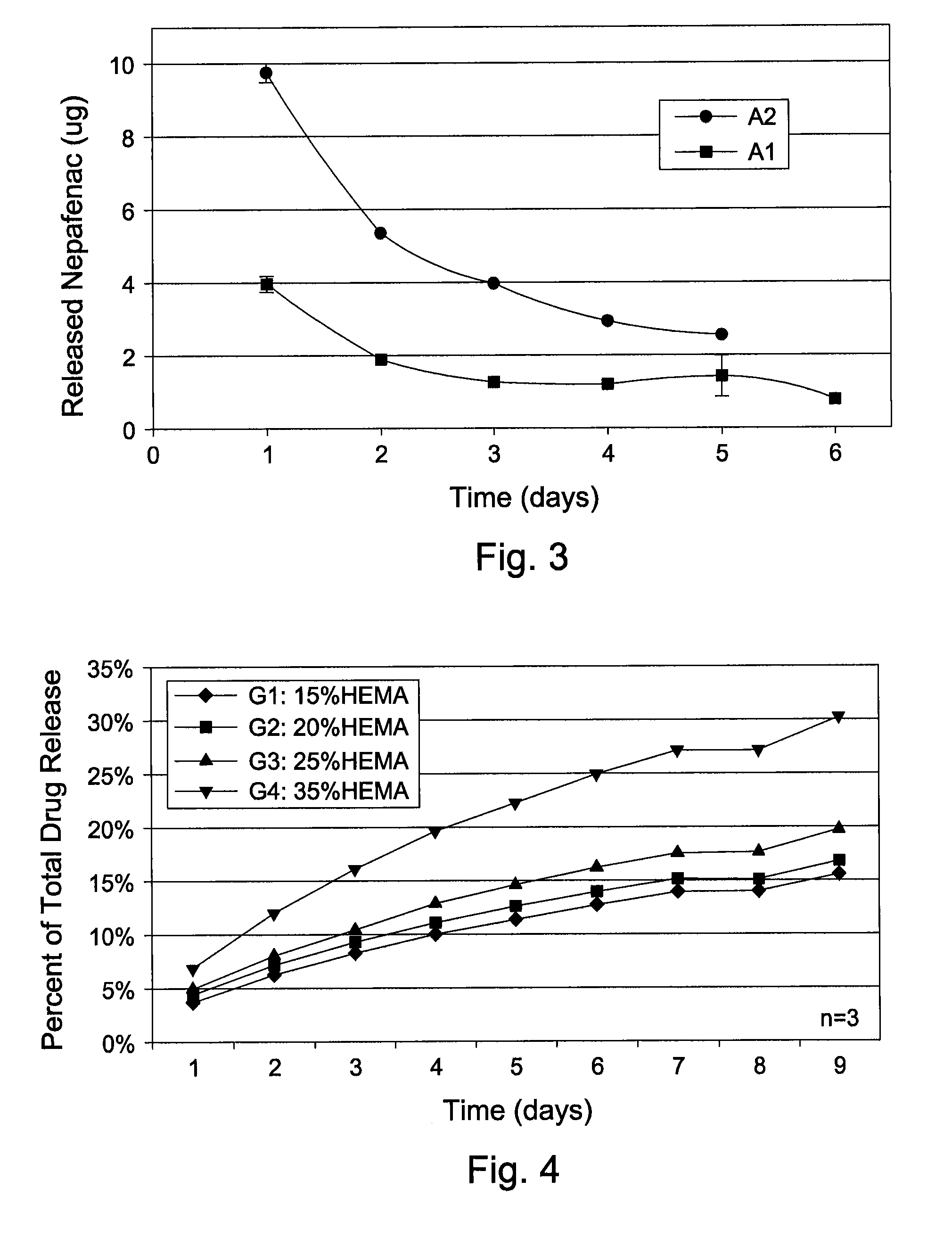Ophthalmic device having therapeutic agent delivery capability and method of forming same
a technology of ophthalmic devices and therapeutic agents, which is applied in the field of ophthalmic devices, can solve the problems of methods, ophthalmic diseases, and the inability of iols to exhibit drawbacks, and achieve the effect of prolonging the release of therapeutic agents
- Summary
- Abstract
- Description
- Claims
- Application Information
AI Technical Summary
Benefits of technology
Problems solved by technology
Method used
Image
Examples
example 1
[0055]A 10 mg / mL of Nepafenac drug solution was made in a 5:1 acetone / methanol solution. The A1 IOL was immersed in the drug solution for 48 hrs at room temperature (RT ˜23° C.) for drug uptake. Drug loaded IOL was then removed from the drug solution, rinsed with blank methanol solvent to wash-off surface drugs, followed by vacuum dry at 50° C. for 4 hrs to remove residual solvents. For drug release study, each drug loaded IOL was placed individually in 0.5 mL of BSS and incubated at 37° C. Total amount of drug release at 1, 12, 30 and 75 days was assayed by high performance liquid chromatography (HPLC) and the results are graphically shown in FIG. 1.
example 2
[0056]A 10.23 mg / mL of nepafenac was made in a 5:1 acetone / methanol solution. The A1 intraocular implant was immersed in the solution for 48 hrs at RT for drug uptake. Drug loaded disc was then removed from the solution, rinsed clean with 5:1 acetone / methanol solution (no drug) to wash-off surface drugs, followed by vacuum dry at 50° C. for 4 hrs to remove residual solvents. For drug release study, each drug loaded disc was placed individually in 0.5 mL of BSS and incubated at 37° C. The BSS was replaced daily for 26 days. Daily released of drug was assayed by HPLC and the results are graphically shown in FIG. 2.
example 3
[0057]A 10.23 mg / mL of nepafenac was made in a 5:1 acetone / methanol solution. A1 discs and A2 discs were immersed in the solution for 48 hrs at RT for drug uptake. Drug loaded disc was then removed from the solution, rinsed clean in a 5:1 acetone / methanol solution (no drug) to wash-off surface drugs, followed by vacuum dry at 50° C. for 4 hrs to remove residual solvents. For drug release study, each drug loaded disc was placed individually in 0.5 mL of BSS and incubate at 37° C. The BSS was replaced daily for a week. Daily release of drug from A1 and A2 discs was assayed by HPLC and the results are graphically shown in FIG. 3.
PUM
| Property | Measurement | Unit |
|---|---|---|
| contact angle | aaaaa | aaaaa |
| contact angle | aaaaa | aaaaa |
| contact angle | aaaaa | aaaaa |
Abstract
Description
Claims
Application Information
 Login to View More
Login to View More - R&D
- Intellectual Property
- Life Sciences
- Materials
- Tech Scout
- Unparalleled Data Quality
- Higher Quality Content
- 60% Fewer Hallucinations
Browse by: Latest US Patents, China's latest patents, Technical Efficacy Thesaurus, Application Domain, Technology Topic, Popular Technical Reports.
© 2025 PatSnap. All rights reserved.Legal|Privacy policy|Modern Slavery Act Transparency Statement|Sitemap|About US| Contact US: help@patsnap.com



